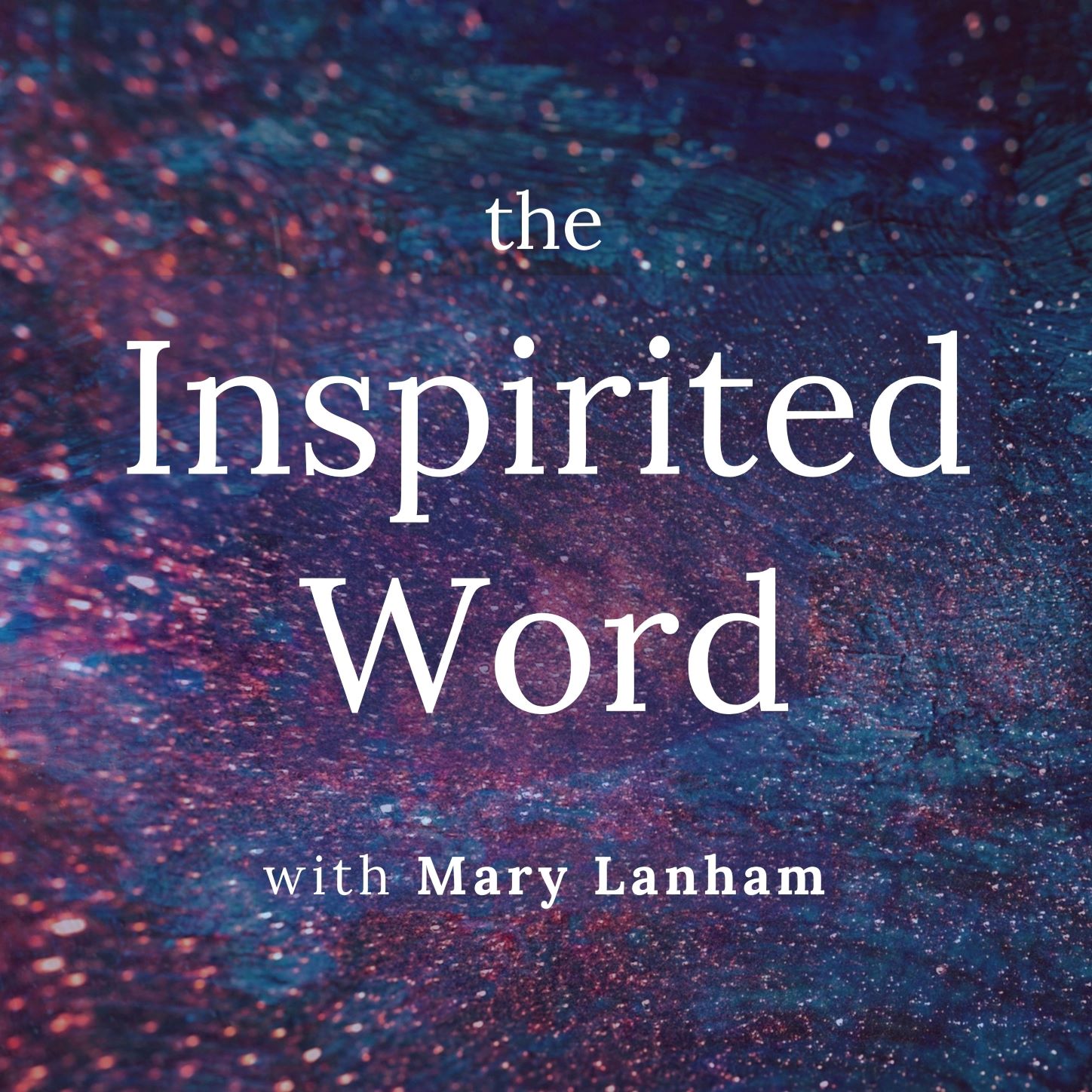Want to write your deepest stories? Forget mastering the craft.

If you’re dedicated to mastering the writing craft... you may be missing out on discovering your most powerful storytelling.
Before you object: No, this isn’t a pass on learning writing skills.
But powerful, transformative storytelling is more than craft mechanics like dialogue, structure, character arcs, or even themes. It’s more than a series of interlocking parts with the goal of making readers feel or think a certain thing.
Deep storytelling is a living relationship between you, your story, and your reader. And as writers, it’s our responsibility to cultivate right relationship at each of these points of the storytelling web, instead of simply pushing a reader’s buttons to get a predictable response.
Losing sight of this creative web can also keep you stuck in stubborn blocks; instead of exploring your vision, you’re trapped in analysis mode, tinkering with your draft like it’s a math problem you can’t quite crack.
But by “unlearning mastery” and reclaiming your connection to the page, you can create work that fully calls forth each reader’s individual humanity (including your own).
That’s how the act of storytelling becomes a relationship—and an encounter your reader will remember long after your book cycles off their Kindle carousel.
For a complete deep-dive into reclaiming your relationship with your storytelling, check out the full podcast episode! Or keep reading for the highlights.

What is writing in right relationship?
Storytelling isn’t a static, passive hand-off of ideas and images. It’s really an act of mutual, multi-layered encounter. First you encounter the story through the process of writing it down—but even once the writing is done, the exchange isn’t finished.
We all know that our story will be read by an actual reader (hopefully by actual readers, plural). But this reality usually gets talked about in ways that strip the tangible relationship out of the storytelling exchange.
When writers talk about “readers,” we’re often not talking about individual human beings at all. We’re usually actually talking about one of two things: the current bookselling market, or writing mechanics.
We’ll say, “Readers just aren’t buying zombie love stories right now” (as sad as that may be). Or we’ll say, “Readers will expect the protagonist to use that loaded rifle to shoot their zombie ex-lover by the end of this chapter.”
It’s easy to get focused on the idea of “readers” as an abstract monolith—which means it’s really easy to stop thinking about the very real, individual humans who will experience, encounter, and perhaps be deeply transformed by our stories.
And that’s when we stop writing in right relationship with readers. We shut down the deeper possibilities for our storytelling by forgetting that storytelling is a relationship at all.
This can manifest in a lot of ways. It can look like spending more time tracking a potential market niche than you spend actually getting in touch with the story you’re writing. Or it can look like adhering too strictly to whatever outline model was touted in the last “plan your bestselling book” post you read, because that type of plot is what “readers” will “expect.”
You might end up with a book that’s more about imposing a series of emotional or intellectual responses than actually telling a real reader a true story.
But stories are supposed to make a reader feel and think, right? Isn’t that basically the whole point of storytelling?? Sure! And yet, maybe no. Or at least, maybe that’s not all of it.
The most powerful stories actually do more than evoke specific thoughts or feelings—and this is what makes them so deeply transformative.
Relationship vs. reaction
As an example, let’s imagine a hypothetical novel with a very suspenseful scene. Let’s say one character is threatening to expose the protagonist’s deep, dark secret unless the protagonist does something truly awful. But then—plot twist!—the confrontation is interrupted before it’s resolved.
If the writer is approaching this scene with the primary goal of evoking a target reaction, they’ll focus on using their mastery of craft techniques to make it as nail-biting as possible.
And if they succeed, a reader might come away saying, “Whoa, that was a nail-biter, and I loved it” (or maybe, “Whoa, that was a nail-biter, and I absolutely hated it”).
But if there’s nothing deeper in that scene, nothing inviting that real individual reader into a more nuanced encounter with the story, then they might thoroughly enjoy the book… and then never think about it again once they’ve finished reading.
It’s the book equivalent of a Hallmark channel movie where you’re hardcore rooting for the big city lawyer to get together with the small town artisanal chocolatier... and then twenty minutes later you can’t remember any of the characters’ names.
The storyteller has succeeded in creating a very specific emotion. But that specific emotion ultimately has a vague, ephemeral effect.
But what if you let go of thinking stuff like “I want readers to bite their nails when they read this scene”? What if your goal is to invite each real, living reader into a deeper encounter with the story?
You might uncover unexpected opportunities. Maybe you see a chance to reveal something deeply surprising about the antagonist’s motivations (and if this is during your first draft, maybe this revelation will surprise you as well).
That kind of unpredictable, organic revelation invites a reader to revise their understanding of the story—without actually telling them how that new understanding should make them feel.
You’re not using standard craft tricks to tell them, “This scene should make you bite your nails.” You’re asking them, “How does this scene make you feel? And why?”
That’s right relationship in storytelling. That’s when you’re offering something to a reader that fully acknowledges and calls forth their individual humanity, instead of just punching their buttons to get a predictable response.
How “unlearning mastery” unlocks relationship in your writing
So, how do we actually apply this to our craft? I think the key is a core mindset shift I’m going to call “unlearning mastery,” a concept I’m borrowing and adapting from writer and philosopher Bayo Akomolafe.
Essentially, all creative and intellectual work in the modern Western worldview is based on the idea of increasing levels mastery. This framework maps onto individuals and how we “master” skills, but it also shapes the way the culture views entire fields of study and experience.
In the context of writing, a great work of art is the literal “masterpiece” of an individual, highly skilled genius.
This framework of mastery requires a fixed world that is basically “fully cooked,” and can therefore be controlled and understood if you just apply enough skill or intellect or inspiration. Humans act on this fixed world with an intellectual intent, and when we have enough mastery, we create our intended result.
(You may be noticing that this sounds a lot like the writing example of the scene intended to make readers bite their nails.)
But Akomolafe’s framework of “unlearning mastery” invites us to think about the world and our creativity in a much more expansive, enlivened way. What if the world’s not fixed? What if everything we create is always evolving and emerging as a collective interaction? Humans don’t act on the world—we’re embedded in the world.
When we unlearn mastery of writing and storytelling, our entire way of being storytellers changes. It has to change.
That idea of the “masterpiece” bestowed by the singular genius upon abstract “readers” becomes… well, sort of silly.
Instead, stories become evolving relationships that the writer is embedded in, but does not fully control, or complete, or create out of nothing. Stories are never finished, never experienced the same way twice, and are inherently collaborative encounters, at every step along the way.
You’re writing the story. The story is also writing you.
Our work as writers, as storytellers, is to be open and available to what the story is telling us. What can our stories recognize and call forth out of us, and how can we nurture that kind of transformative creative encounter?
This may sound like a lofty goal, but right relationship with story starts with a very tangible first step: reclaiming and shifting your day-to-day writing practice. After all, that’s the beating heart of your relationship with your storytelling self.
To unlearn mastery and bring forth deeply transformative writing, the first thing to unlearn is the way you think about yourself as somebody who “hasn’t mastered the craft.” Somebody who is failing all the time right up until you someday, finally, hopefully get it right.
When mastery is no longer the goal, you’re free to stop seeing the page in front of you as a mirror showing you whether you’re good enough and smart enough and talented enough. You’re free to discover a new relationship with your creativity, your stories, and your readers.
What’s the first thing you want to unlearn when it comes to your relationship with your storytelling self? What’s a real action you could take to start unlearning that?
And what might be possible once you do?
Hello! I’m Mary Lanham, an editor committed to helping queer, nonbinary, and femme writers fully access their deep creative vision.
If you’re writing speculative fiction that illuminates margins, or if you’re creating nonfiction on radical spirituality and personal development, let’s set your most luminous, mythic, and inspired storytelling loose.